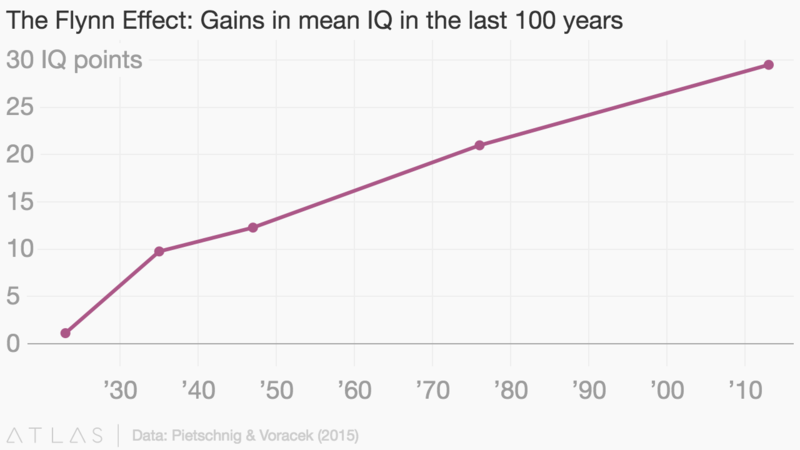Learning, Knowledge and Human Development MOOC’s Updates
Limitations and Problematic Conclusions with IQ Tests: A Critical Analysis of Goddard's Army Examination
Goddard's Army Examination was an IQ test developed by Henry Goddard based on Alfred Binet's concept of mental age. This analysis will focus on the limitations and problematic conclusions resulting from this IQ test and its uses over the past century. Below is an exerpt from this exam (Goddard, 1920):
Do these two words mean the same or opposite: wet—dry?
Do these two words mean the same or opposite: in—out?
Do these two words mean the same or opposite: hill—valley?
Write the next two numbers in this series: 3, 4, 5, 6, 7, 8.
In this series: 15, 20, 25, 30, 35.
In this series: 8, 7, 6, 5, 4, 3.
Goddard, unfortunately, began his work based on the misleading and self-limiting concept of "mental age" developed by Binet. While developmental milestones are undeniable, it is commonly accepted in current Psychology that every person develops at their own rate, and therefore development is relative, not deterministic. Following this logic, it is problematic to assume that "mental age" measures anything substantial - meaning an objective, identifiable, standard and reliable "thing." Instead, mental age may best be understood as a relative "milemarker" of intellectual ability. It should be noted that the concept of "mental age" may indeed work better for children than adults, as developmental milestones are more common and well-understood for children. Therefore, Goddard's IQ test may be more valid and reliable for children (who are still actively developing, so there is a consistent and easily identifiable difference between different ages) than adults (who are largely developed with less significant differences across short age ranges). In other words, as most people would agree, there is a bigger developmental difference between people who are 3 years apart in age when applied to children (9 and 12, for example) than adults (42 and 45, for example).
Regarding the actual questions on Goddard's IQ test, the answers to these test questions from almost 100 years ago may seem obvious today. This is likely a result of the phenomenon that each subsequent generation in humankind is smarter (more knowledgable) than the previous generation. This is obviously something unique to humankind and our abilit to collect and pass on information through education. Goddard (1920) makes an important distinction between intellect and knowledge, however, arguing "Intelligence is the potentiality of the machine. Knowledge is the material upon which it works. Knowledge is the raw material. Intelligence determines what we do with it." There is an important distinction between knowledge and intelligence, but it may be more subtle than Goddard's IQ test can detect. Specifically, the general knowledge of the average person in an industrialized society has significantly improved in the past century, making these questions from Goddard in 1920 (which were supposed to measure intellect, not knowledge) relatively easy in current times. This phenomenon in which both crystallized and fluid intelligence test scores increase over generations is referred to as the Flynn effect (Baker et. al., 2015). The Flynn effect has many interesting implications, which are still being throughouly debated in the scientific community. One implication is that measuring intellect is a moving target, and not something fixed across time. This notion is relatively ironic in the context of IQ tests, which have the basic assumption of intelligence as unchanging, allowing only for knowledge to be variable. My view is that Goddard's Army Examination is an imperfect measure of intelligence, because it also measures knowledge, and that it would be extremely difficult to completely parse out and measure intelligence irrespective of knowledge.
James Flynn: Why our IQ levels are higher than our grandparents', TED talks. https://www.youtube.com/watch?v=9vpqilhW9uI
The uses of IQ tests, such as Goddard's Army Examination, to "accurately" measure intelligence have been largely unsuccessful and misleading. However, as was one of the original intentions of measuring intelligence, IQ tests can sometimes accurately assess when a person has learning disabilities (Binet, 1905). The limits of this test and other IQ tests is in successfully isolating a measure of intelligence separate from knowledge. A problematic conclusion of IQ test results is that people with higher IQ scores are smarter than those with lower IQ scores. This view is misleading because it assumes that the type of intelligence/knowledge measured by IQ tests is the only, or only valuable, form of intelligence. It is possible, and perhaps common, that people who score lower on IQ tests such as Goddard's, which seek to measure "objective intellect" have significantly higher emotional intelligence, spatial intelligence, or musical/artistic intelligence. The opposite may be true as well, that those who score higher on traditional IQ tests may have lower forms of emotional, spatial, or creative intelligence. Therefore, it is problematic to assume that people who score higher on IQ measures are inherently smarter overall than those with lower scores. Human intelligence is extremely complex and nuanced; IQ tests simply don't accurately represent this diversity.
References:
Baker, David P.; Eslinger, Paul J.; Benavides, Martin; Peters, Ellen; Dieckmann, Nathan F.; Leon, Juan (March 2015). "The cognitive impact of the education revolution: A possible cause of the Flynn Effect on population IQ". Intelligence. 49: 144–58. doi:10.1016/j.intell.2015.01.003. ISSN 0160-2896.
Binet, Alfred. 1905 [1916]. ‘New Methods for the Diagnosis of the Intellectual Level of Subnormals.’ in The Development of Intelligence In Children, edited by Alfred Binet and Theodore Simon. New York. pp.64, 37, 39, 40, 42–3. || WorldCat
Goddard, Henry H. 1920. Human Efficiency and Levels of Intelligence. Princeton NJ: Princeton University Press. pp. 8, 12, 19–20, 127–128. || WorldCat


